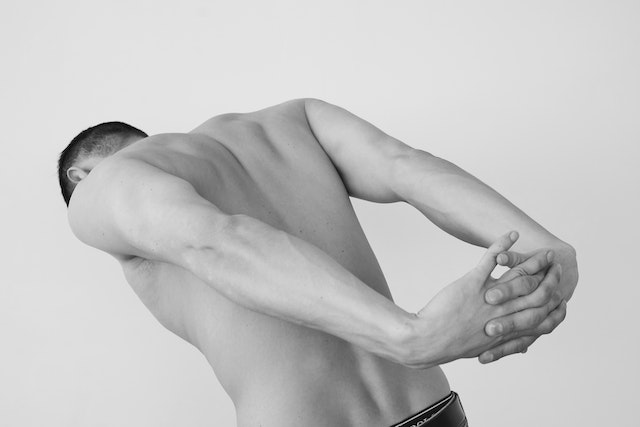The Juvenile idiopathic arthritis It is a term that many people are unaware of but that must be known to know how it can affect those who suffer from it.. Rheumatic diseases also exist in early stages such as childhood or adolescence, being diseases that affect the connective tissue, main component of the locomotor system and which is also part of other organs such as the eyes, the skin, vasos sanguíneos…
detroit lions jersey
Ohio State Team Jersey
College Football Jerseys
College Football Jerseys
micah parsons jersey
asu jersey
Ohio State Team Jersey
detroit lions jersey
OSU Jerseys
Florida state seminars jerseys
brock bowers jersey
brock bowers jersey
custom football jerseys
detroit lions jersey
For this reason, we find that its symptoms are very varied, such as pain and inflammation of the joints, fever, skin rashes, enlarged nodes, fatigue, growth retardation, and so on. Within childhood rheumatic diseases, the most common is juvenile idiopathic arthritis (AIJ).
Index
What is juvenile idiopathic arthritis?
The Juvenile idiopathic arthritis It is a chronic inflammatory disease that mainly affects the joints but can also affect other organs and can have an impact on the normal growth and development of the child..
This problem arises before the 16 years old and can last for several years, although contrary to what happens with other cases, not necessarily for life. In any case, Keep in mind that not all arthritis is the same., there are several types that have their own characteristics.
In general, is problem it is more common in girls and begins to occur between the first and fourth year of life, although each type of arthritis has a preference for a different sex and age group, and it is a problem that occurs in different races.
Every year around 10 cases for each 100.000 children under 16 years and approximately 1 decade 1.000 children globally suffer from chronic arthritis.
Causes of juvenile idiopathic arthritis
If you have come this far, you will be interested in knowing the causes of the Juvenile idiopathic arthritis, having to take into account that the exact cause of its occurrence is unknown. It is not produced by germs, What makes it not an infectious disease?, nor is it cured with antibiotics, besides not being contagious.
Nor is it caused by the weather nor does trauma cause the disease, nor is it inherited, although it is true that hereditary factors influence and it is possible that another member of the family has some form of arthritis.
Some children have a special genetic predisposition and if it coincides with other still unknown factors, autoimmune alterations occur., that is to say, of our defense system. It is the child's own immune system that acts against infections and reacts against the body itself, especially at the level of the synovial membrane that lines the joints, thus producing its chronic inflammation or arthritis.
The initial lesion occurs as a consequence of inflammation of the synovial membrane., that increases its thickness and produces a greater amount of liquid than normal, stretching the capsule and ligaments.
Symptoms of juvenile idiopathic arthritis
Los síntomas principales de la Juvenile idiopathic arthritis are the pain, the inflamation, and increased heat in the joints, Existing stiffness and difficulty in performing movements. Sometimes the onset is slow and progressive and occurs little by little in children, without hardly realizing. Nevertheless, en otras ocasiones el comienzo es brusco y grave, with important general symptoms such as high fever, spots on the skin, diffuse pain in legs and arms or swelling in other joints.
The persistence of inflammation in joints that are growing, alters its final morphology and can become deformed if not treated correctly from the beginning.
Types of juvenile idiopathic arthritis
Now comes the time to talk about the different types of Juvenile idiopathic arthritis, each having its own characteristics:
systemic arthritis
In this case we are talking about a systemic arthritis when the child has a persistent fever and skin spots along with arthritis or joint pain. It is more common in children younger than 5 years and affects both boys and girls.
From the first day the child has muscle pain in the arms and legs and in the joints, which are accentuated when the fever is high. Sometimes there are no signs of inflammation and arthritis can appear even days, weeks or months later.
Polyarthritis
The polyarthritis occurs when many joints are inflamed from the start (more than four) without having a great impact on the general state, although later fatigue appears, muscular weakness, loss of appetite and difficulty performing movements. Affects girls of any age more.
Polyarthritis with rheumatoid factor
It is a less frequent form that occurs in just one 10% of the cases. Most are girls between 11 and 16 years, beginning with nonspecific symptoms but rapidly developing into symmetrical polyarthritis, inflaming the same joints on the right and left side.
Oligoartritis
It is a more common type of arthritis and affects fewer than four joints., being more common in girls under the age of 6 years and usually begins between 2-3 year old. Sometimes there is a monoarthritis, when only one joint is inflamed, which is usually the knee. This type of arthritis does not affect the general condition of the child, but has a high risk of producing inflammation of the eyes.
Arthritis with enthesitis
It occurs more frequently among children 10 and 12 year old, mainly affecting the joints of the legs: knees, hips, ankles and toes. Es muy característica la inflamación de las zonas de unión del hueso con los tendones y ligamentos, what is known as enthesitis.
arthritis with psoriasis
Finally, within juvenile idiopathic arthritis we must mention this arthritis accompanied by the skin disease called psoriasis, with which the skin flakes off and punctate lesions appear on the nails. It is rare among children but can affect children over the age of 8 years.
